DESN 232 — RAPID VIZ I | FALL 2019 | T/TH 4:00–6:45PM
PROCESS
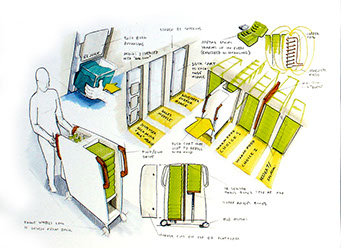
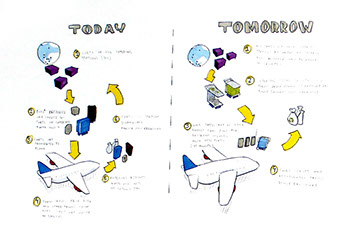
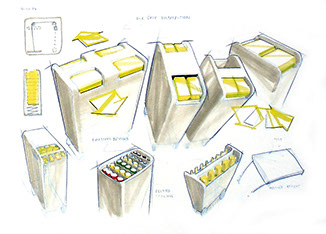
Airplane Food Supply Chain. Part 1 Study
Airplane Food Supply Chain. Part 2 Refined Development
PHASE 1
RESEARCH AND IDEATION
Determine which assignment you want to tackle.
Research your material! Source reference images as needed.
Generate rough drafts to determine important, critical, usefully descriptive views to describe your process.
You MUST have human anatomy, hands, full body, etc. in your drawings.
Incorporate graphic arrows as needed.
Strong, graphic line will be most successful, refine your layout and refine
your drawings into a clean and clearly descriptive layout.
Utilize a multitude of scale relationships in your illustrations, as needed.
You cannot draw everything! Be CRITICAL as to what steps warrant a drawing. You MUST describe your process with a minimum of 5 steps, but limit the steps to no more than 10.
Feel free to use photos of people, babies, anatomy, etc for underlays, especially if you struggle with drawing human anatomy. It's ok.
Examples
Preliminary, rough ideation and exploration of views and ideas.
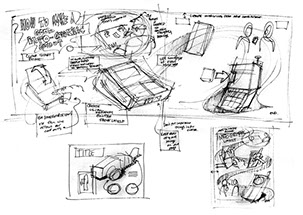
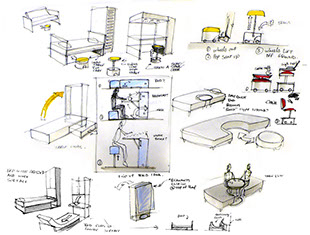
PHASE 2
REVISION AND FINALIZATION
Work out your drawings and narrative. What are you trying to communicate and are your drawings achieving that?
Document your drawings and incorporate into a well organized, clear communication piece in Photoshop.
Distracting or unnecessarily decorative or distracting graphics WILL result in grade reduction.
Include descriptive annotations as needed.
Examples
Preliminary presentation study drawings by Val Margerum, photographed in classroom,
no image adjustments.

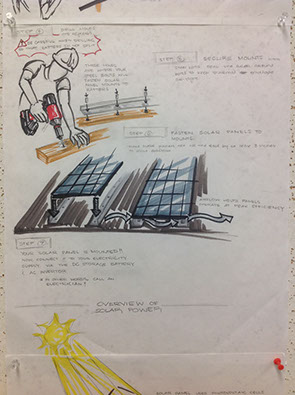
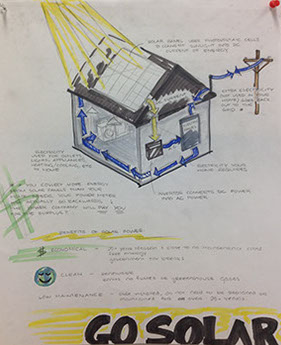
STUDENT EXAMPLES
This "How to Make a Mai Tai by David Bañuelos is three sheets of paper combined in Photoshop to create this one continuous image.

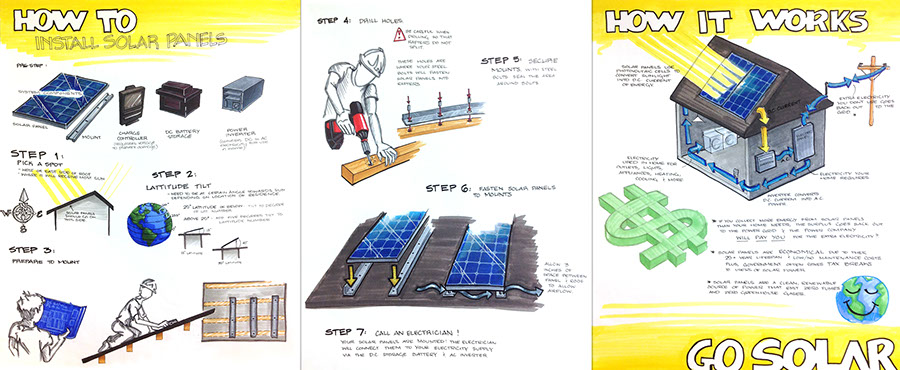
Final presentation by Val Margerum, Photoshop work by LaForte. Summer 2015
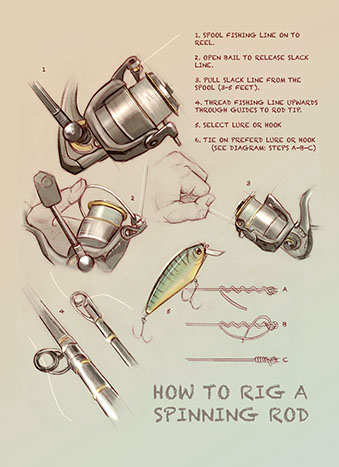
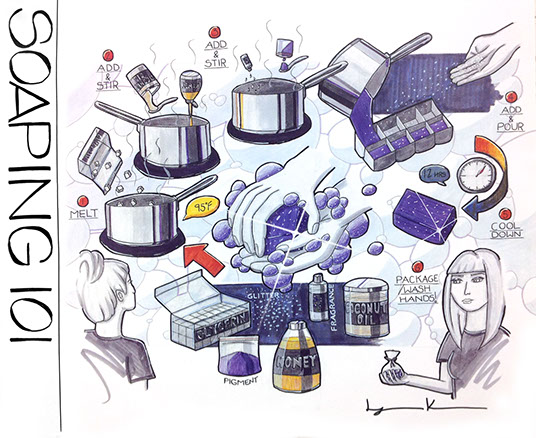
How to Rig a Spinning Rod, by Ave Barr. Summer 2015
How to Make Soap (Soaping), by Lynn Krusell
PHOTOSHOP CLEANUP
Below is a highly graphic, black and white only approach which challenges students to focus on contrast and figure/ground relationships in narrative communication. Below, the same image cleaned up in Photoshop is ready for web or print delivery. Always clean up your work, correct as many errors as you can.
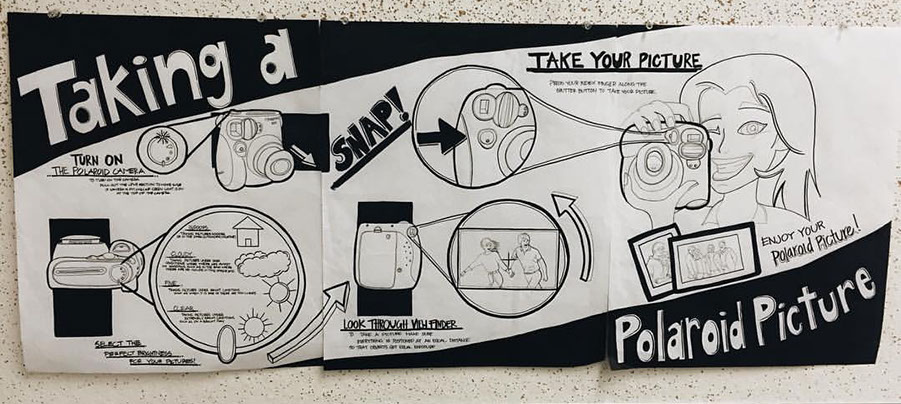
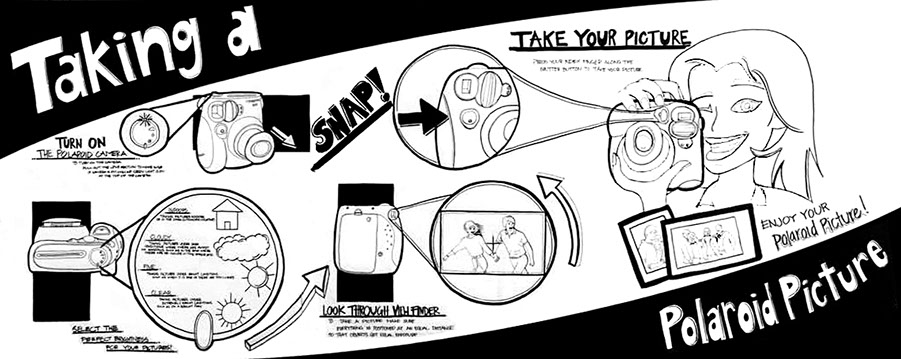
Watch how the illustration
image above was cleaned-up
in Photoshop
STUDENT LEARNING OBJECTIVES (SLOs)
- Challenge students to make choices and develop narrative drawings,
- Challenge students to commit to strong line development,
- Challenge student's to make critical choices,
- Challenge student's imagination.
GRADING AND EVALUATION RUBRIC
The following Rubric applies in assessment of the student's work product, presentation, and/or process:
^
* Estimate only. See instructor and calendar for specific due dates. Summer Session schedule is more compressed with one week equal to approximately two and half semester weeks.
CSULB | COTA | DEPARTMENT OF DESIGN | BIO

Questions, feedback, suggestions?
Email me with your recommendations.
©2020 Michael LaForte / Studio LaForte, All Rights Reserved. This site and all work shown here is purely for educational purposes only. Where ever possible student work has been used or original works by Michael LaForte.
Works by professionals found online or in publication are used as instructional aids in student understanding and growth and is credited everywhere possible.